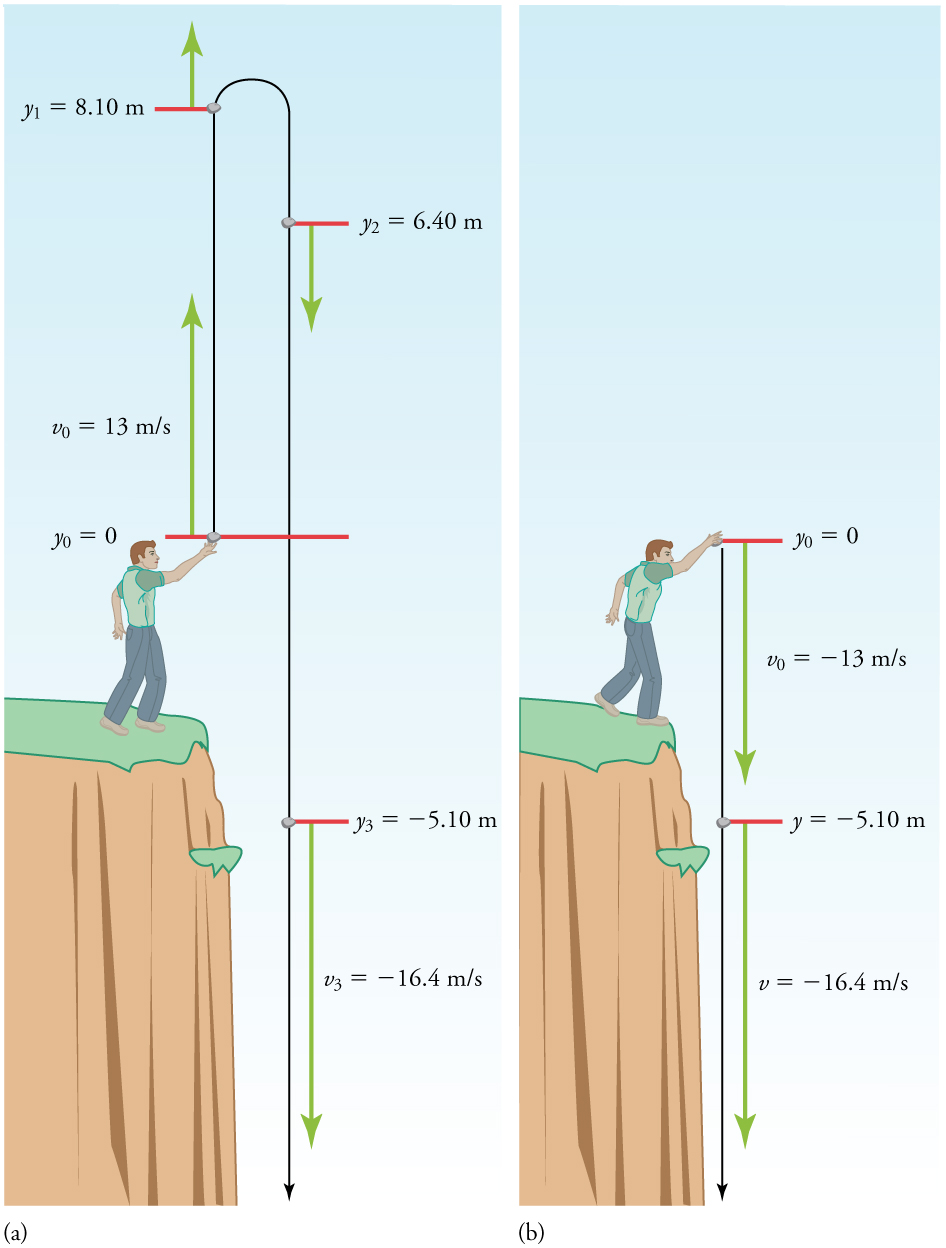| << Chapter < Page | Chapter >> Page > |
What happens if the person on the cliff throws the rock straight down, instead of straight up? To explore this question, calculate the velocity of the rock when it is 5.10 m below the starting point, and has been thrown downward with an initial speed of 13.0 m/s.
Strategy
Draw a sketch.

Since up is positive, the final position of the rock will be negative because it finishes below the starting point at . Similarly, the initial velocity is downward and therefore negative, as is the acceleration due to gravity. We expect the final velocity to be negative since the rock will continue to move downward.
Solution
1. Identify the knowns. ; ; ; .
2. Choose the kinematic equation that makes it easiest to solve the problem. The equation works well because the only unknown in it is . (We will plug in for .)
3. Enter the known values
where we have retained extra significant figures because this is an intermediate result.
Taking the square root, and noting that a square root can be positive or negative, gives
The negative root is chosen to indicate that the rock is still heading down. Thus,
Discussion
Note that this is exactly the same velocity the rock had at this position when it was thrown straight upward with the same initial speed . (See [link] and [link] (a).) This is not a coincidental result. Because we only consider the acceleration due to gravity in this problem, the speed of a falling object depends only on its initial speed and its vertical position relative to the starting point. For example, if the velocity of the rock is calculated at a height of 8.10 m above the starting point (using the method from [link] ) when the initial velocity is 13.0 m/s straight up, a result of is obtained. Here both signs are meaningful; the positive value occurs when the rock is at 8.10 m and heading up, and the negative value occurs when the rock is at 8.10 m and heading back down. It has the same speed but the opposite direction.

Another way to look at it is this: In [link] , the rock is thrown up with an initial velocity of . It rises and then falls back down. When its position is on its way back down, its velocity is . That is, it has the same speed on its way down as on its way up. We would then expect its velocity at a position of to be the same whether we have thrown it upwards at or thrown it downwards at . The velocity of the rock on its way down from is the same whether we have thrown it up or down to start with, as long as the speed with which it was initially thrown is the same.

Notification Switch
Would you like to follow the 'College physics for ap® courses' conversation and receive update notifications?